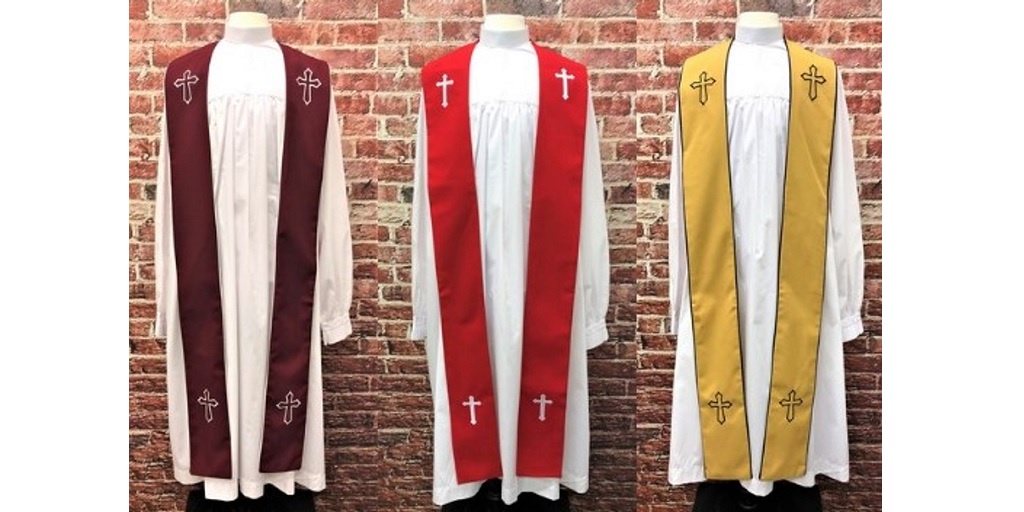So, you've taken the monumental step into the world of clergy, and you're trying to navigate the significance and intricacies of liturgical vestments? One piece that might have caught your attention is the clergy stole. It's not just a piece of fabric; it's a symbol, a marker of authority and a historic relic all in one.
A Brief Overview of Clergy Stoles
This vestment is, in essence, a band of colored cloth, typically silk, running about seven and a half to nine feet in length and three to four inches in width. Its ends might broaden out resembling a spade or bell.
Decorated with contrasting galloons and often featuring fringe, this vestment carries religious designs, notably two crosses. Placed around the back of the neck, its ends hanging parallel in front, embodying the essence of priestly authority. Where priests are absent, in some Protestant denominations, this vestment represents an ordained member.
Digging into the Etymology and History
The term "stole" traces its roots to the Latin word stola and the Greek stolē, which translates to "garment" or "equipment". Initially, this vestment appeared as a shawl draping the shoulders, extending in front of the body.
Over time, post its adoption by the Church of Rome around the seventh century, it underwent a transformation, becoming narrower and more ornate. Today, these vestments showcase a blend of intricate designs and a broader make.
It's interesting to muse over the origin stories of this vestment. While some associate it with the tallit, a Jewish prayer mantle, others link it to a liturgical napkin known as the orarium.
Symbolism and Shades
Colors and symbols breathe life into the fabric of clergy vestments. Aligned with the cincture and the nearly obsolete maniple, these vestments signify the restraints binding Jesus during his Passion.
Its adornments, especially the cross, encapsulate the duty of propagating the Word of God. Furthermore, in Catholic liturgical rites, this vestment, draped by priests, symbolizes their authority.
The Stole in Action
In the vast expanse of Western Christianity, the Roman Catholic tradition holds this vestment as the mark of Holy Orders recipients. When a deacon is ordained, this vestment is conferred, signaling their initiation into the clergy.
Depending on their rank, they wear it differently: priests around their necks with the ends in front, and deacons over their left shoulder, tied cross-wise on the right. Modern practices have evolved.
Once, priests, barring bishops, crossed the stole over the breast. Today, it often hangs straight. During the Mass, it's worn over the alb but beneath the chasuble. The same goes for deacons but under the dalmatic. In para-liturgical celebrations, this vestment graces the surplice or alb and always rests beneath the cope.
And hey, if you’re a newbie to this space and thinking of investing in clergy vestments, remember that every detail – the fabric, the design, the way it hangs – communicates something profound about your role and your commitment.
Ready to Find Your Stole?
The perfect stole awaits, blending tradition with personal touch. Consider checking out DivinityClergyWear.com for a selection that honors history and embodies elegance. Dive into a collection that speaks to every clergy member, whether seasoned or just starting out.
For More Information About cassock robe And Tippets Please Visit:- Divinity Clergy Wear


No comments yet